Презентація на тему «Education in Australia» (варіант 2)
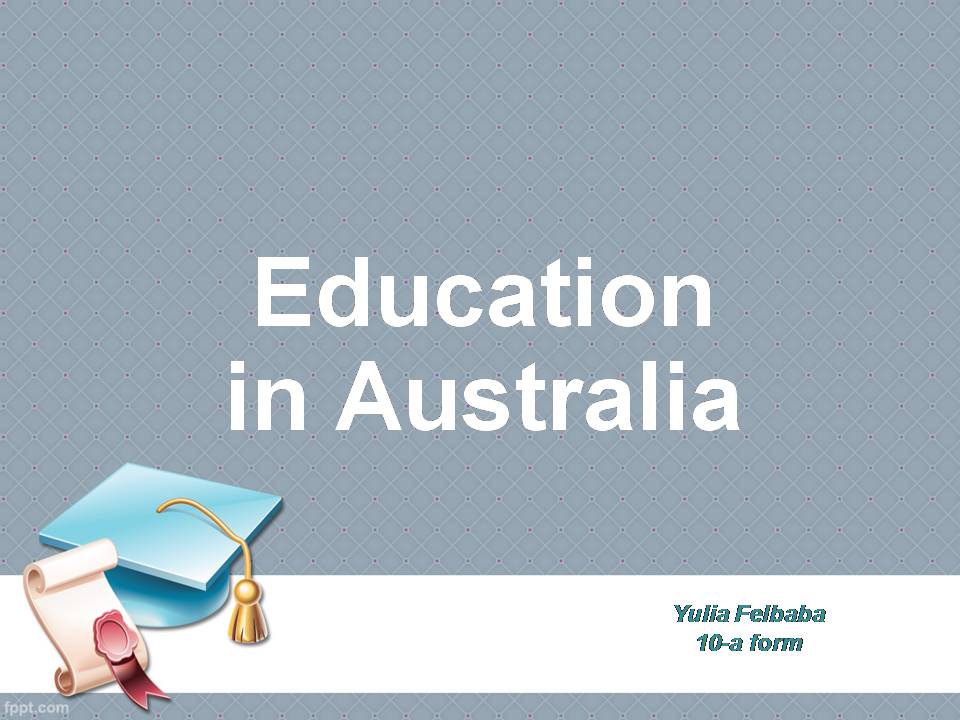
Education in Australia
Yulia Felbaba
10-a form
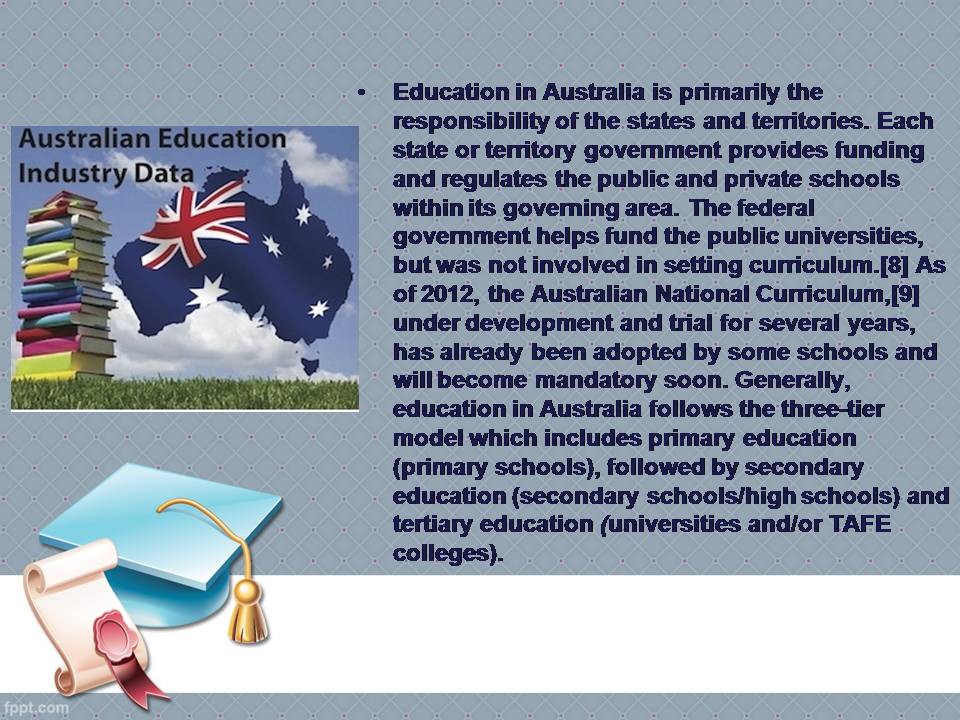
Education in Australia is primarily the responsibility of the states and territories. Each state or territory government provides funding and regulates the public and private schools within its governing area. The federal government helps fund the public universities, but was not involved in setting curriculum.[8] As of 2012, the Australian National Curriculum,[9] under development and trial for several years, has already been adopted by some schools and will become mandatory soon. Generally, education in Australia follows the three-tier model which includes primary education (primary schools), followed by secondary education (secondary schools/high schools) and tertiary education (universities and/or TAFE colleges).
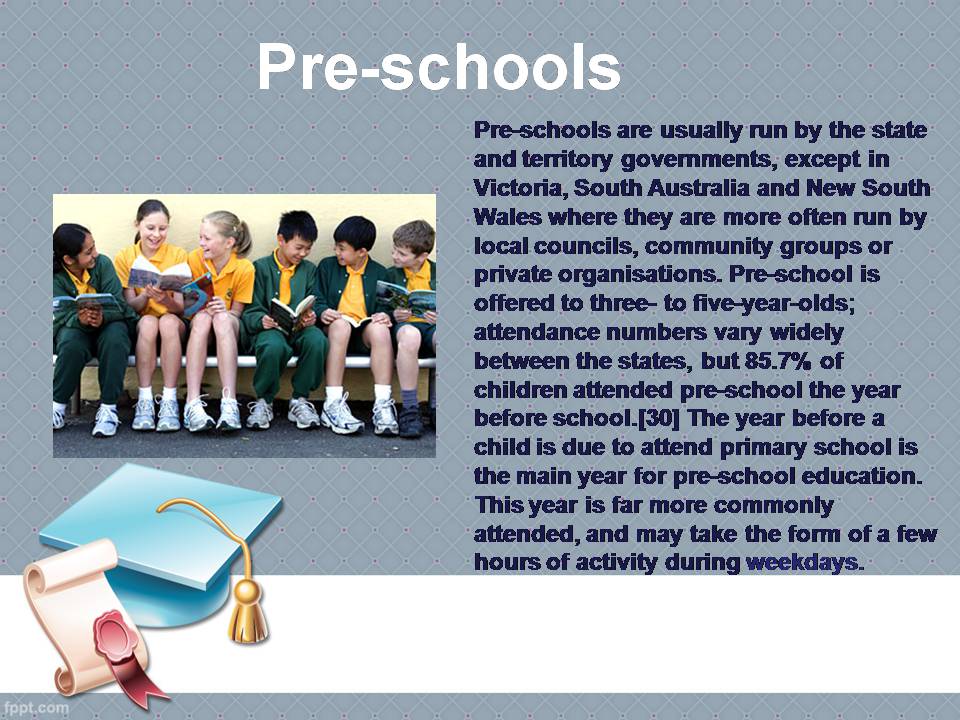
Pre-schools are usually run by the state and territory governments, except in Victoria, South Australia and New South Wales where they are more often run by local councils, community groups or private organisations. Pre-school is offered to three- to five-year-olds; attendance numbers vary widely between the states, but 85.7% of children attended pre-school the year before school.[30] The year before a child is due to attend primary school is the main year for pre-school education. This year is far more commonly attended, and may take the form of a few hours of activity during weekdays.
Pre-schools
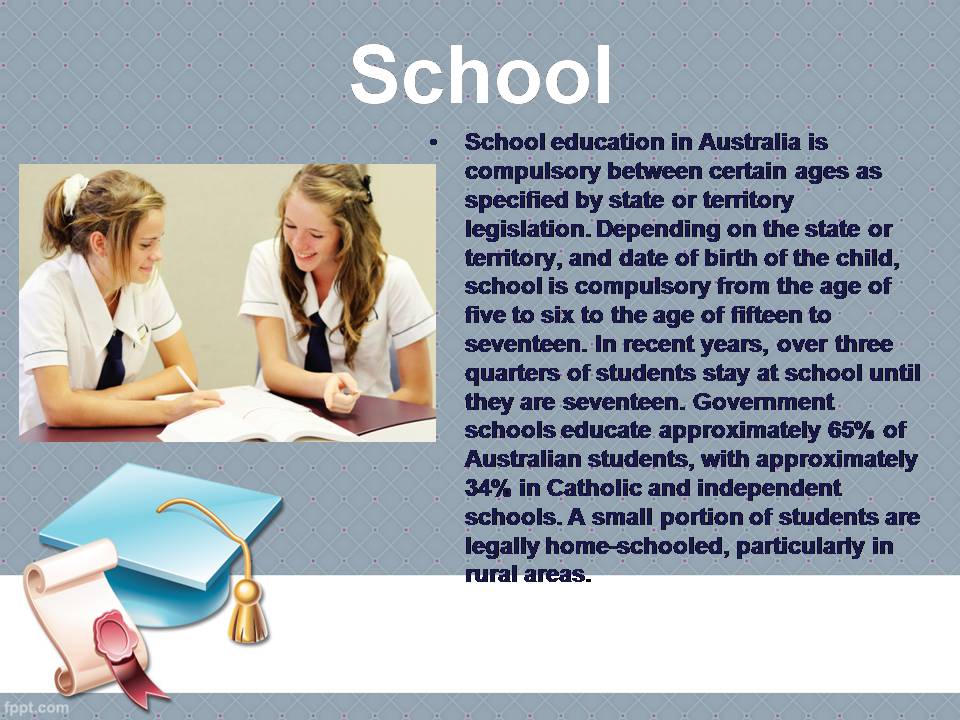
School
School education in Australia is compulsory between certain ages as specified by state or territory legislation. Depending on the state or territory, and date of birth of the child, school is compulsory from the age of five to six to the age of fifteen to seventeen. In recent years, over three quarters of students stay at school until they are seventeen. Government schools educate approximately 65% of Australian students, with approximately 34% in Catholic and independent schools. A small portion of students are legally home-schooled, particularly in rural areas.
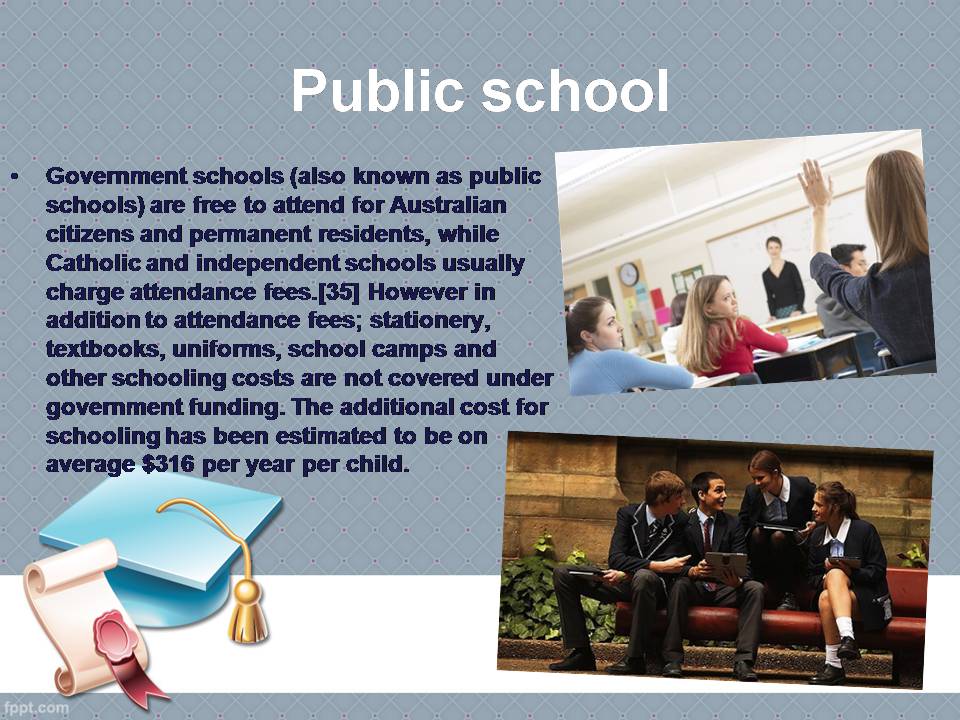
Public school
Government schools (also known as public schools) are free to attend for Australian citizens and permanent residents, while Catholic and independent schools usually charge attendance fees.[35] However in addition to attendance fees; stationery, textbooks, uniforms, school camps and other schooling costs are not covered under government funding. The additional cost for schooling has been estimated to be on average $316 per year per child.
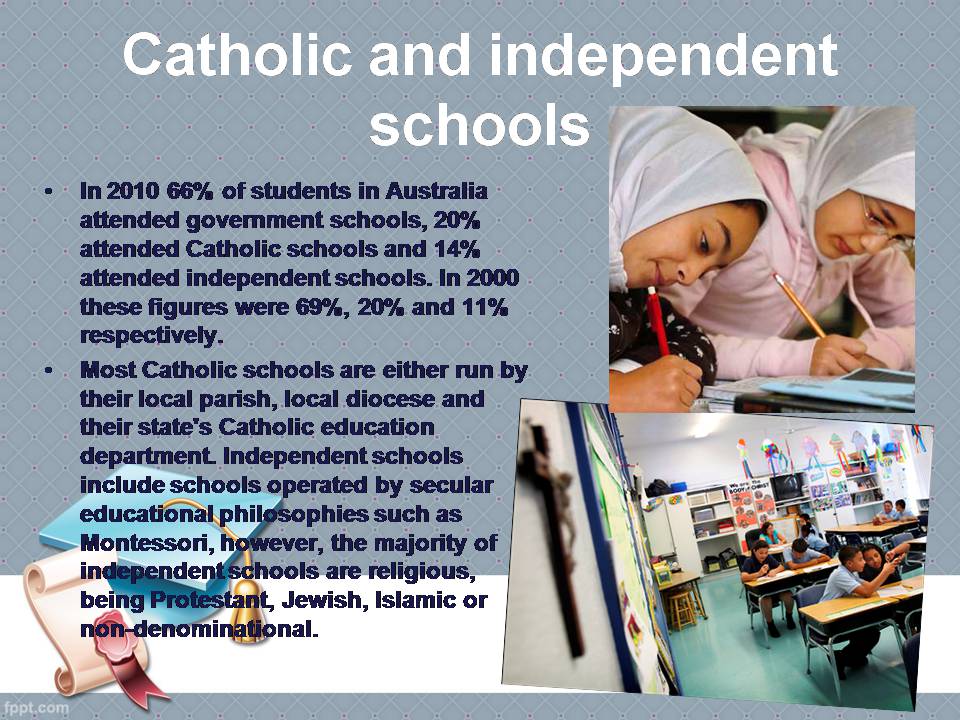
Catholic and independent schools
In 2010 66% of students in Australia attended government schools, 20% attended Catholic schools and 14% attended independent schools. In 2000 these figures were 69%, 20% and 11% respectively.
Most Catholic schools are either run by their local parish, local diocese and their state's Catholic education department. Independent schools include schools operated by secular educational philosophies such as Montessori, however, the majority of independent schools are religious, being Protestant, Jewish, Islamic or non-denominational.
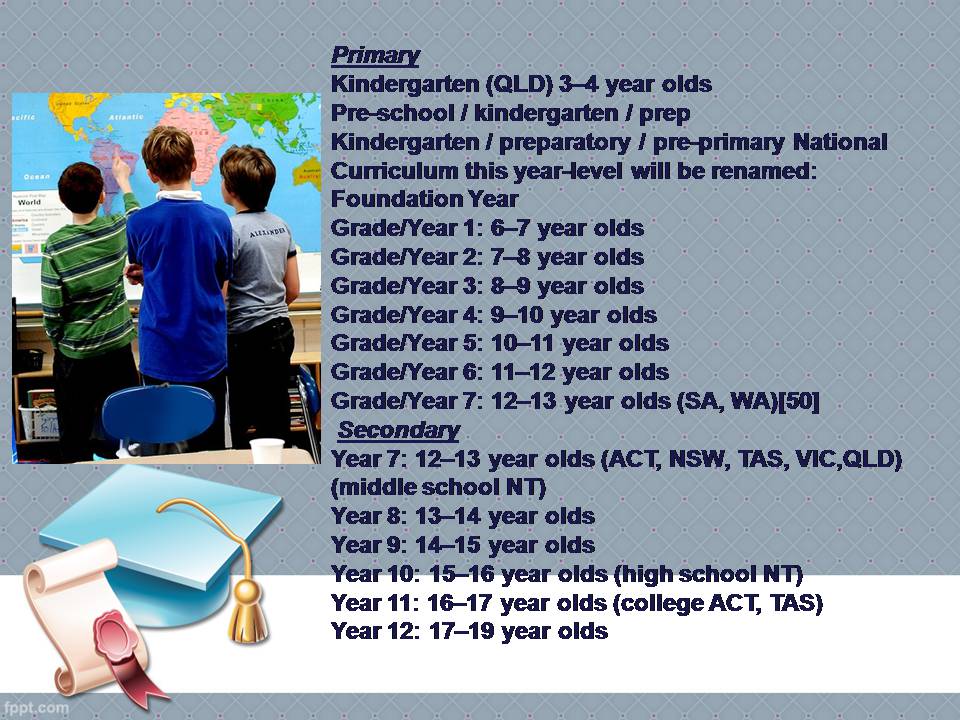
Primary
Kindergarten (QLD) 3–4 year olds
Pre-school / kindergarten / prep
Kindergarten / preparatory / pre-primary National Curriculum this year-level will be renamed: Foundation Year
Grade/Year 1: 6–7 year olds
Grade/Year 2: 7–8 year olds
Grade/Year 3: 8–9 year olds
Grade/Year 4: 9–10 year olds
Grade/Year 5: 10–11 year olds
Grade/Year 6: 11–12 year olds
Grade/Year 7: 12–13 year olds (SA, WA)[50]
Secondary
Year 7: 12–13 year olds (ACT, NSW, TAS, VIC,QLD) (middle school NT)
Year 8: 13–14 year olds
Year 9: 14–15 year olds
Year 10: 15–16 year olds (high school NT)
Year 11: 16–17 year olds (college ACT, TAS)
Year 12: 17–19 year olds

Higher education in Australia
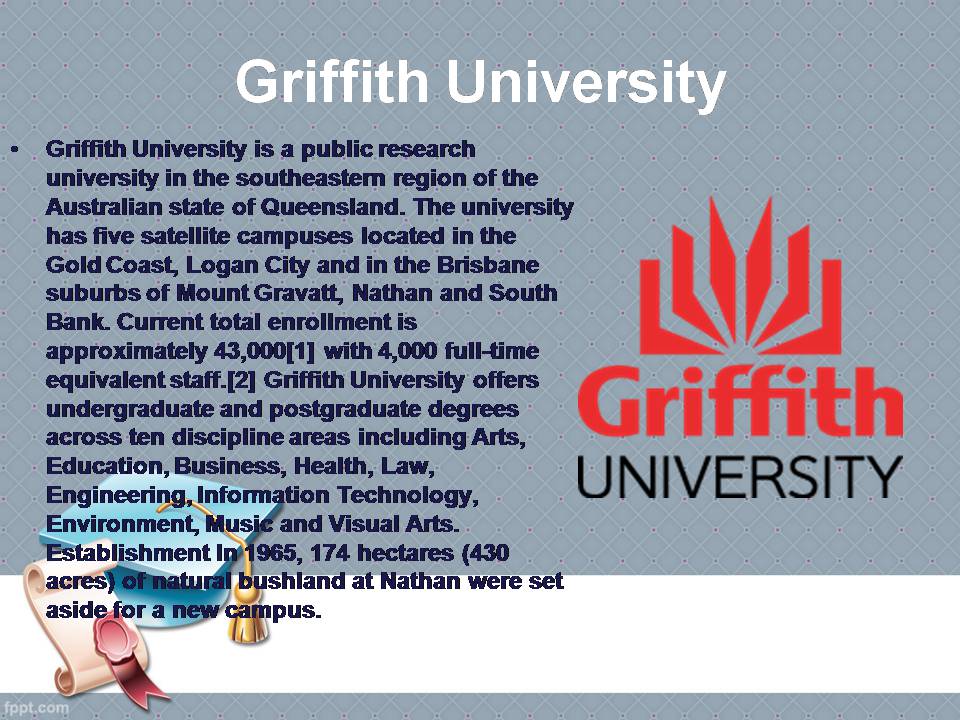
Griffith University
Griffith University is a public research university in the southeastern region of the Australian state of Queensland. The university has five satellite campuses located in the Gold Coast, Logan City and in the Brisbane suburbs of Mount Gravatt, Nathan and South Bank. Current total enrollment is approximately 43,000[1] with 4,000 full-time equivalent staff.[2] Griffith University offers undergraduate and postgraduate degrees across ten discipline areas including Arts, Education, Business, Health, Law, Engineering, Information Technology, Environment, Music and Visual Arts. Establishment In 1965, 174 hectares (430 acres) of natural bushland at Nathan were set aside for a new campus.

Griffith University
Griffith University is a public research university in the southeastern region of the Australian state of Queensland. The university has five satellite campuses located in the Gold Coast, Logan City and in the Brisbane suburbs of Mount Gravatt, Nathan and South Bank. Current total enrollment is approximately 43,000[1] with 4,000 full-time equivalent staff.[2] Griffith University offers undergraduate and postgraduate degrees across ten discipline areas including Arts, Education, Business, Health, Law, Engineering, Information Technology, Environment, Music and Visual Arts. Establishment In 1965, 174 hectares (430 acres) of natural bushland at Nathan were set aside for a new campus.
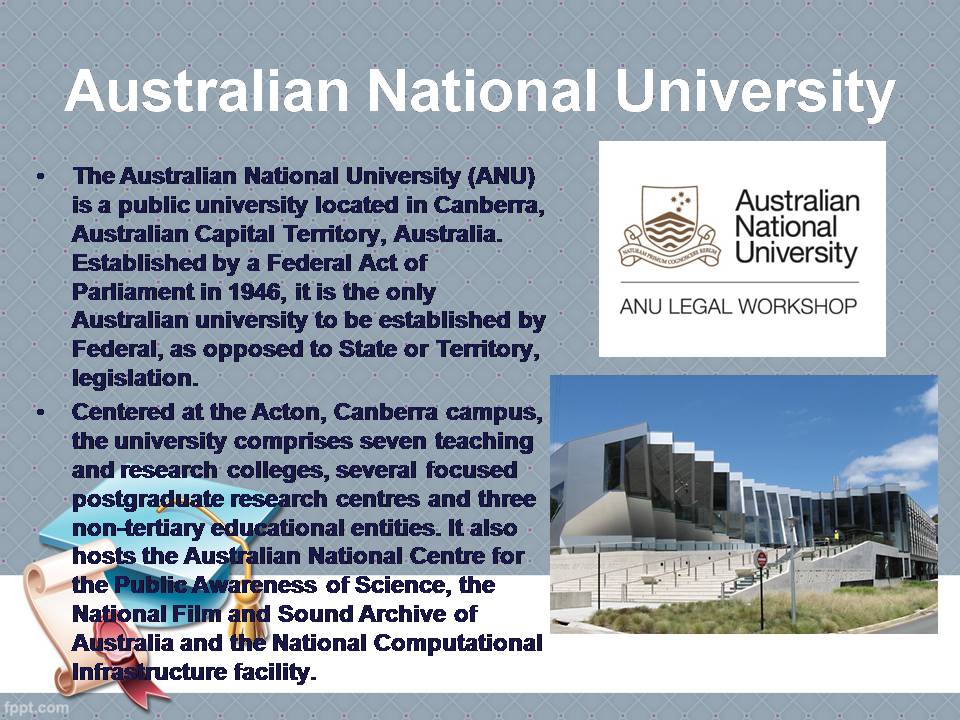
Australian National University
The Australian National University (ANU) is a public university located in Canberra, Australian Capital Territory, Australia. Established by a Federal Act of Parliament in 1946, it is the only Australian university to be established by Federal, as opposed to State or Territory, legislation.
Centered at the Acton, Canberra campus, the university comprises seven teaching and research colleges, several focused postgraduate research centres and three non-tertiary educational entities. It also hosts the Australian National Centre for the Public Awareness of Science, the National Film and Sound Archive of Australia and the National Computational Infrastructure facility.
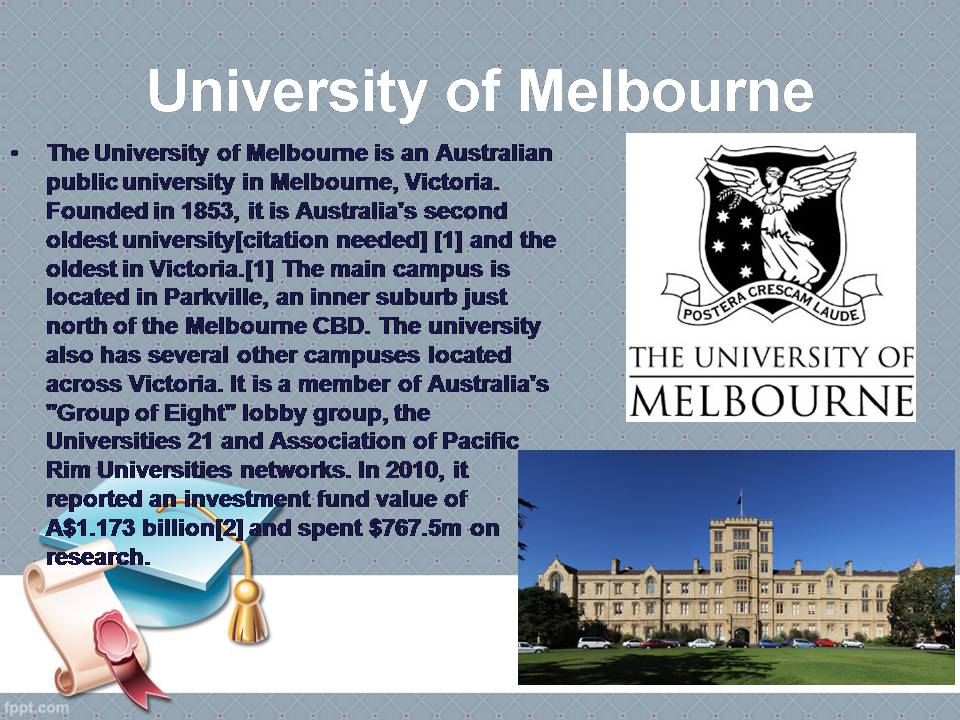
University of Melbourne
The University of Melbourne is an Australian public university in Melbourne, Victoria. Founded in 1853, it is Australia's second oldest university[citation needed] [1] and the oldest in Victoria.[1] The main campus is located in Parkville, an inner suburb just north of the Melbourne CBD. The university also has several other campuses located across Victoria. It is a member of Australia's "Group of Eight" lobby group, the Universities 21 and Association of Pacific Rim Universities networks. In 2010, it reported an investment fund value of A$1.173 billion[2] and spent $767.5m on research.

Thank you !The end